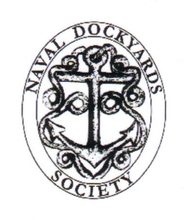Twentieth Century Naval Dockyards Devonport and Portsmouth: Characterisation Project
Ann Coats, David Davies, David Evans, Raymond Riley, 2016. https://doi.org/10.5284/1038393. How to cite using this DOI
Data copyright © Historic England, Dr Ann Coats, Dr David Davies, Dr David Evans, Dr Raymond Riley unless otherwise stated
This work is licensed under the ADS Terms of Use and Access.
Primary contact
Dr
Ann
Coats
Project Manager
Naval Dockyards Society
44 Lindley Avenue
Southsea
Hampshire
PO4 9NU
Resource identifiers
- ADS Collection: 2284
- DOI:https://doi.org/10.5284/1038393
- How to cite using this DOI
Introduction

The project was designed to increase our overall understanding of the dockyard built environment by telling the national story of twentieth century dockyards and the particular narratives of Devonport and Portsmouth Dockyards, enabling Historic England to focus its resources effectively in managing these historic environments (650 acres at Devonport; 300 acres at Portsmouth). The introduction analyses the historical, political, social, military, industrial, architectural and economic background of Devonport and Portsmouth Dockyards during the twentieth century.
Aim: To characterise the development of the active naval dockyards at Devonport and Portsmouth, and the facilities within the dockyard boundaries at their maximum extent during the twentieth century, through library, archival and field surveys, presented and analysed in a published report, with a database of documentary and building reports also available.
Objectives:
- Provide an overview of the twentieth century development of English naval dockyards, related to historical precedent, national foreign policy and naval strategy.
- Address the main chronological development phases to accommodate new types of vessels and technologies of the naval dockyards at Devonport and Portsmouth.
- Identify the major twentieth century naval technological revolutions which affected British naval dockyards.
- Relate the main chronological phases to topographic development of the yards and changing technological and strategic needs, and identify other significant factors.
- Distinguish which buildings are typical of the twentieth century naval dockyards and/or of unique interest.
The Naval Defence Act (1889) initiated a massive expansion of the major British naval dockyards in the twentieth century to support arms races with France, Russia and Germany. Technological innovations included Dreadnought battleships, submarines, oil replacing coal and electricity replacing oil as the main fuel, aircraft, radar and nuclear-powered submarines, and concrete as a building material. The report identifies purpose-built twentieth century structures, existing buildings adapted for new technologies, and unique structures performing the main dockyard activities (construction, repair and maintenance of ships) at Devonport and Portsmouth. In July 1998 the Strategic Defence Review, reinforced by the 2005 Defence Industrial Strategy, focused resources on increased offensive air power and two Queen Elizabeth class aircraft carriers.
Each selected building’s overall type or purpose, historically and at present, its materials and possible date(s), summarising form (structure, materials, layout), function, date and sequence of development, is described. The names of the architects, builders or occupants are given where known. Copies of historic maps, drawings or photographs illustrating the development of the building or its site are located within relevant chapters and dockyard building designations are included as appendices.
Also recorded:
- evidence for demolished structures or removed plant;
- a building’s relationship to local settlement patterns, field systems, gardens or other artificially reclaimed landscape; their part in any larger architectural or functional group of buildings and its visual importance as a landmark;
- potential survival of below-ground evidence;
- architectural or historical context or significance of the building locally, regionally or nationally, in terms of its origin, purpose, form, construction, design, materials and status;
- contents of specialist architectural and archaeological reports.






